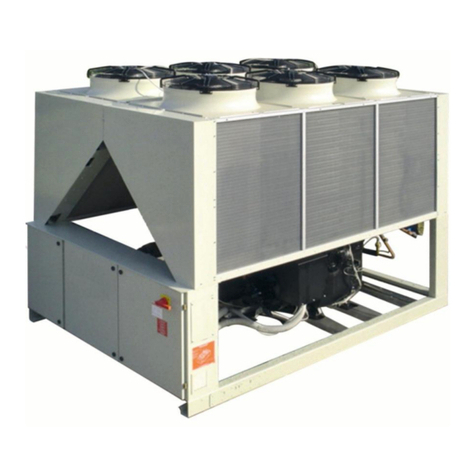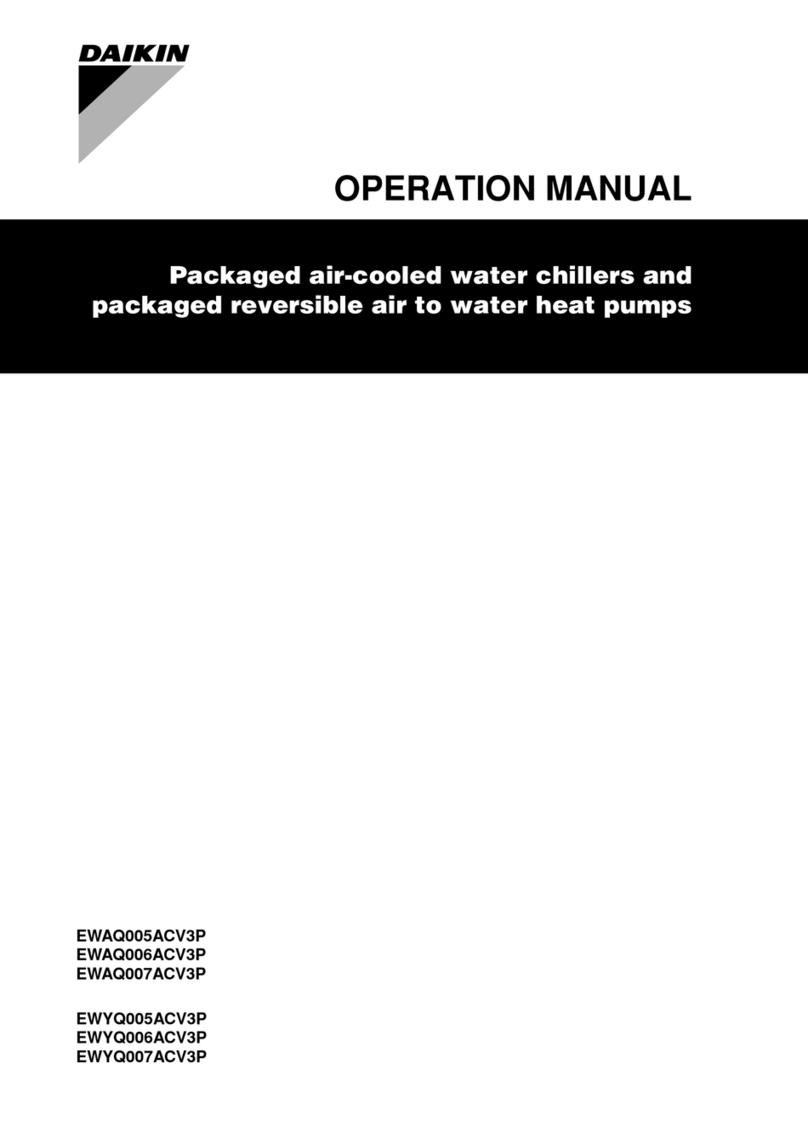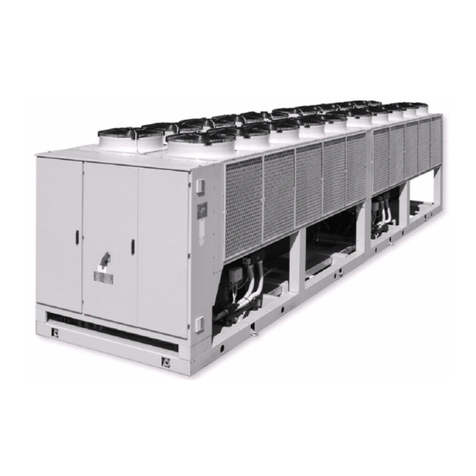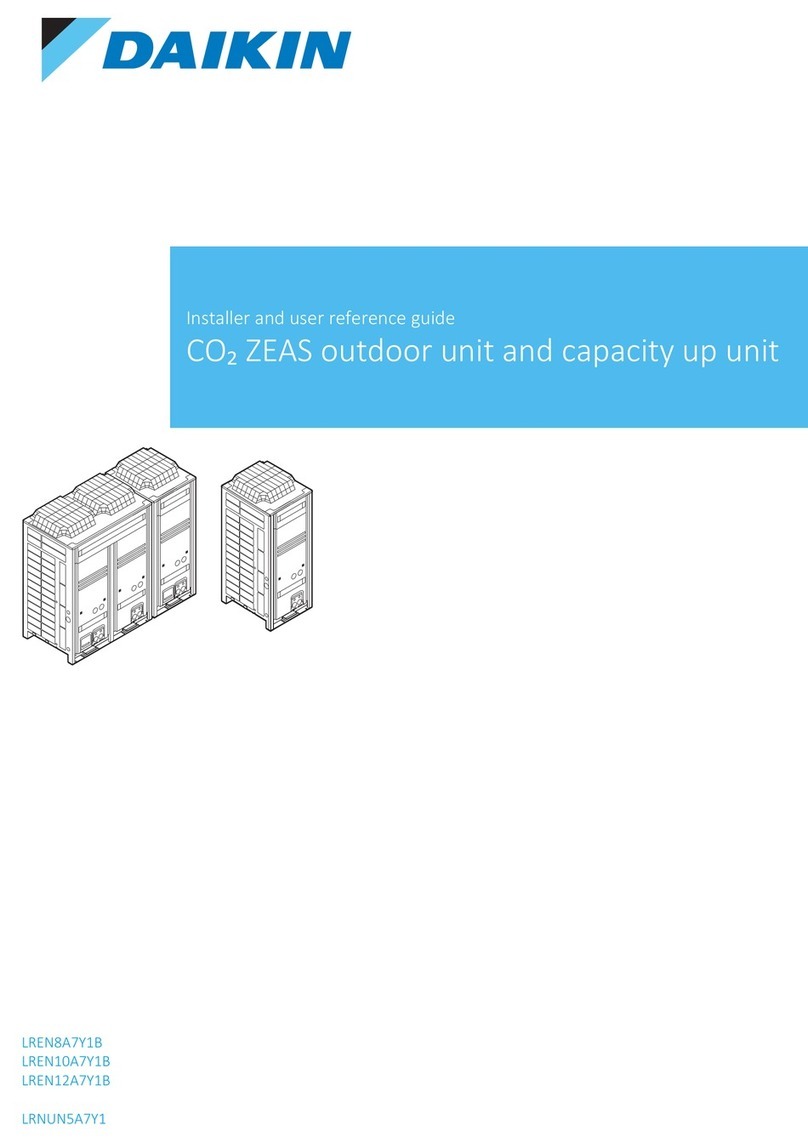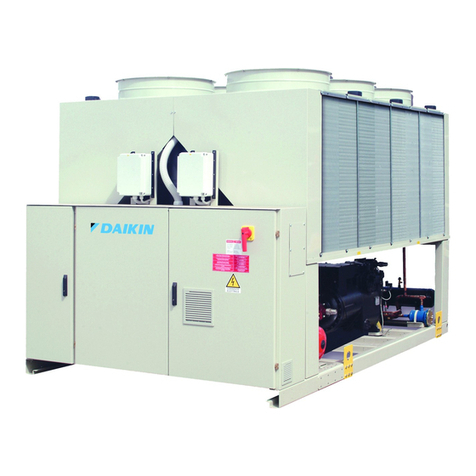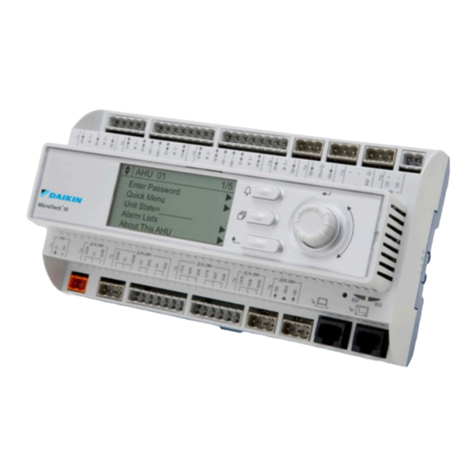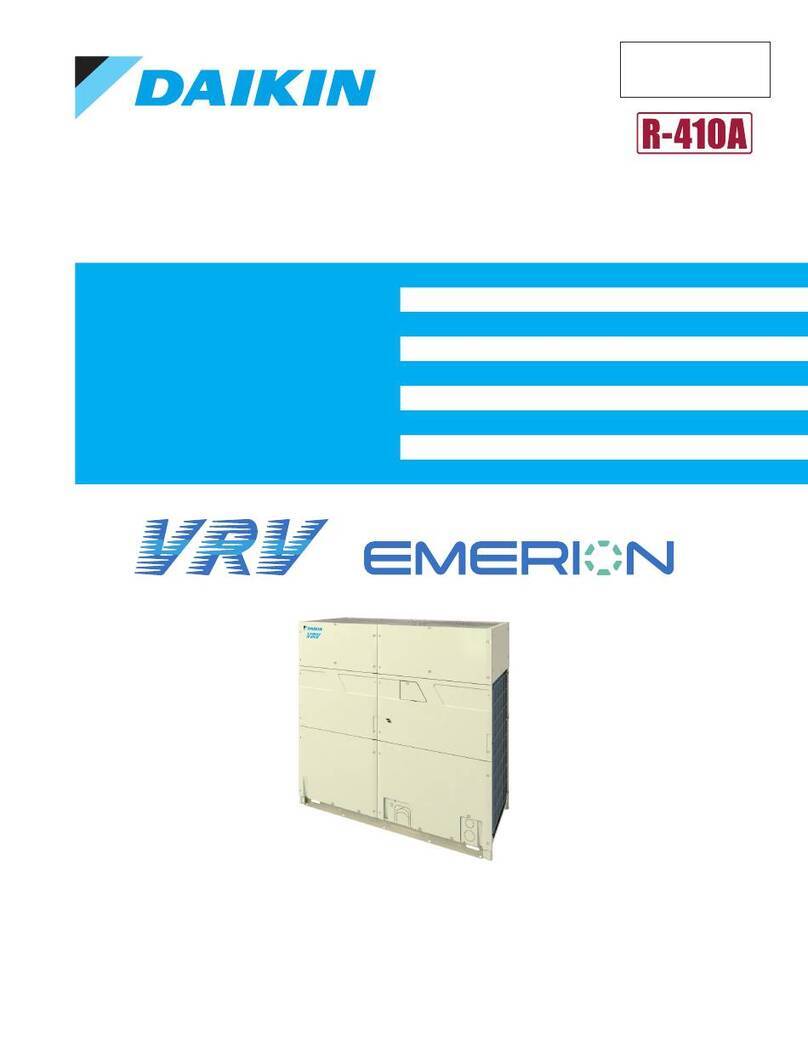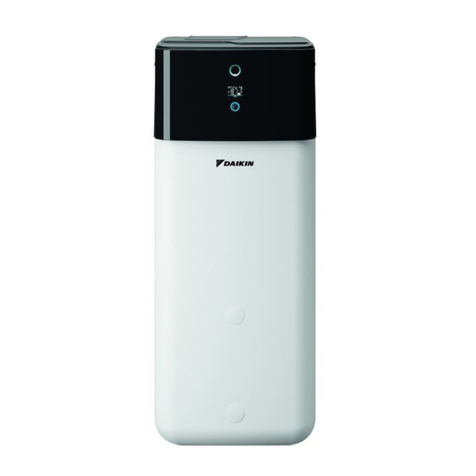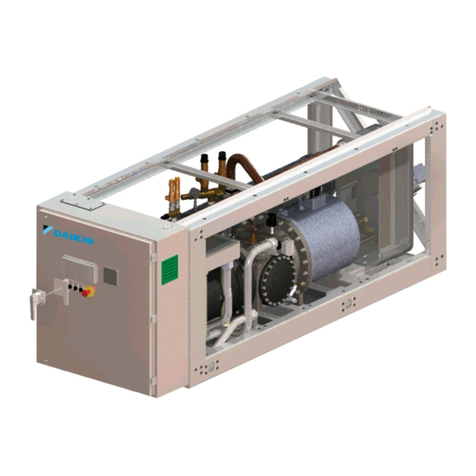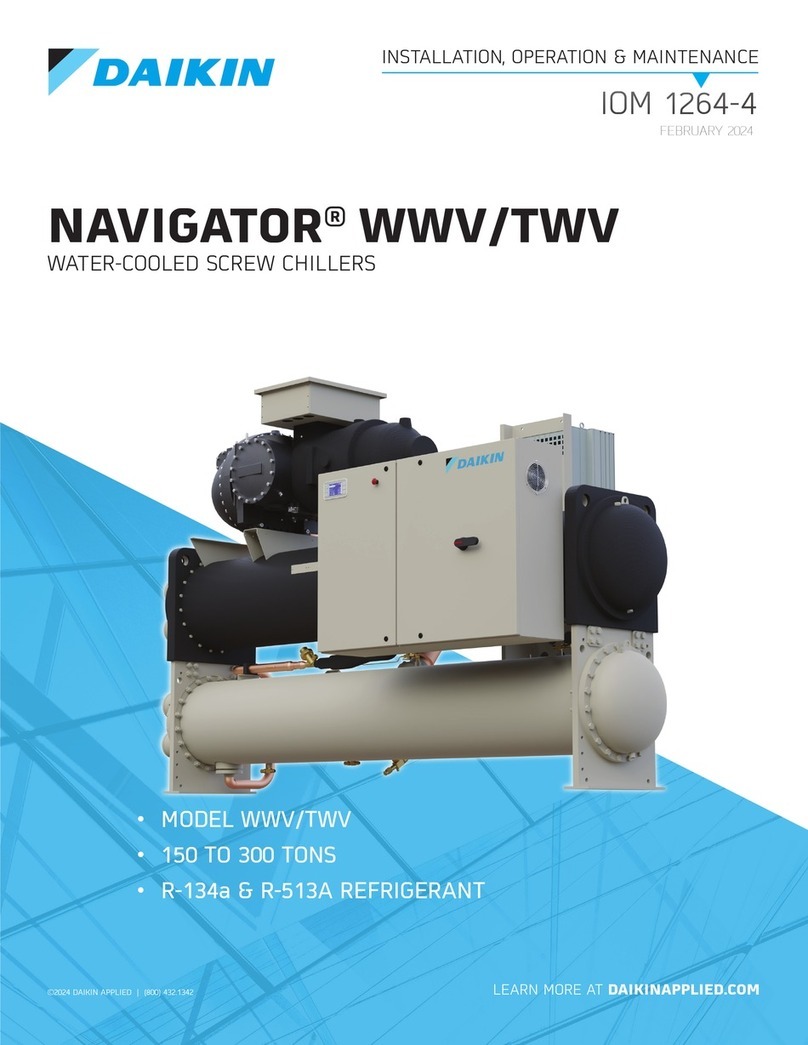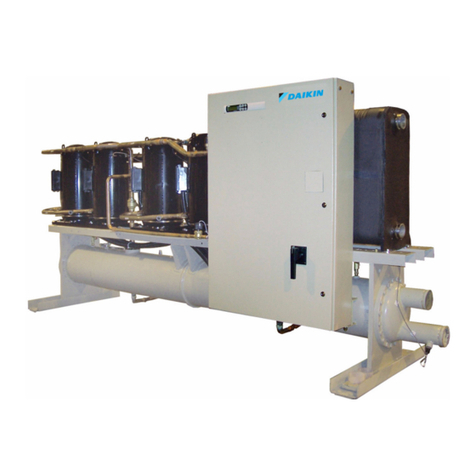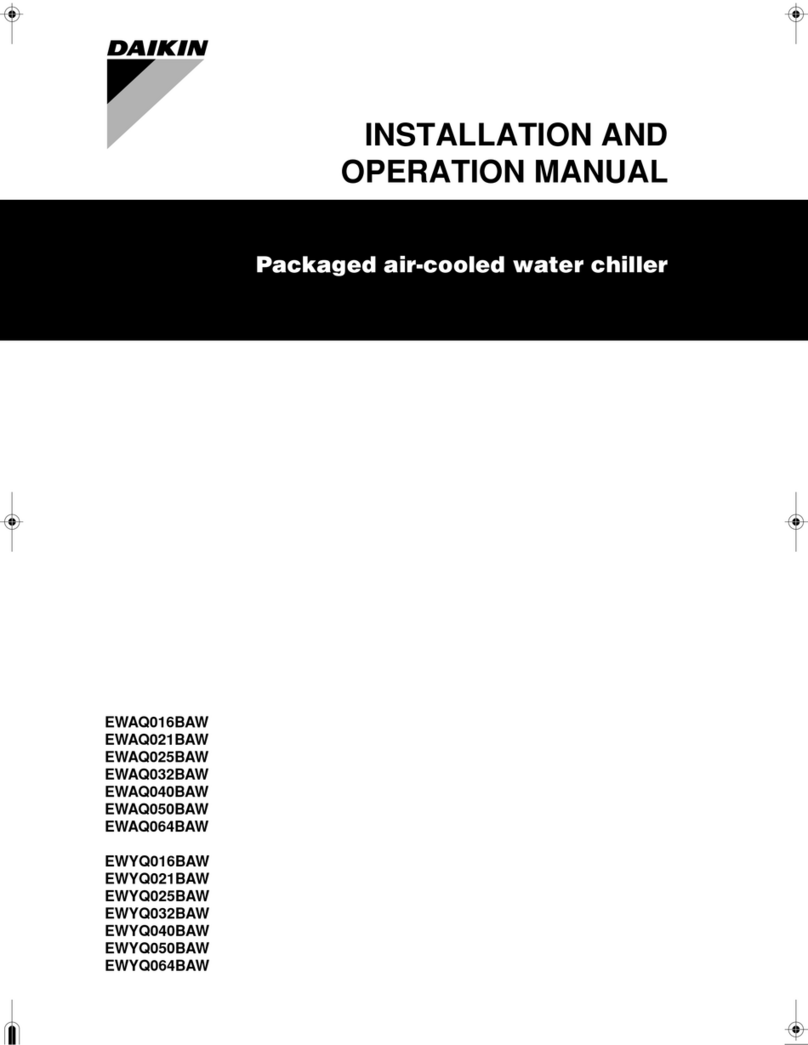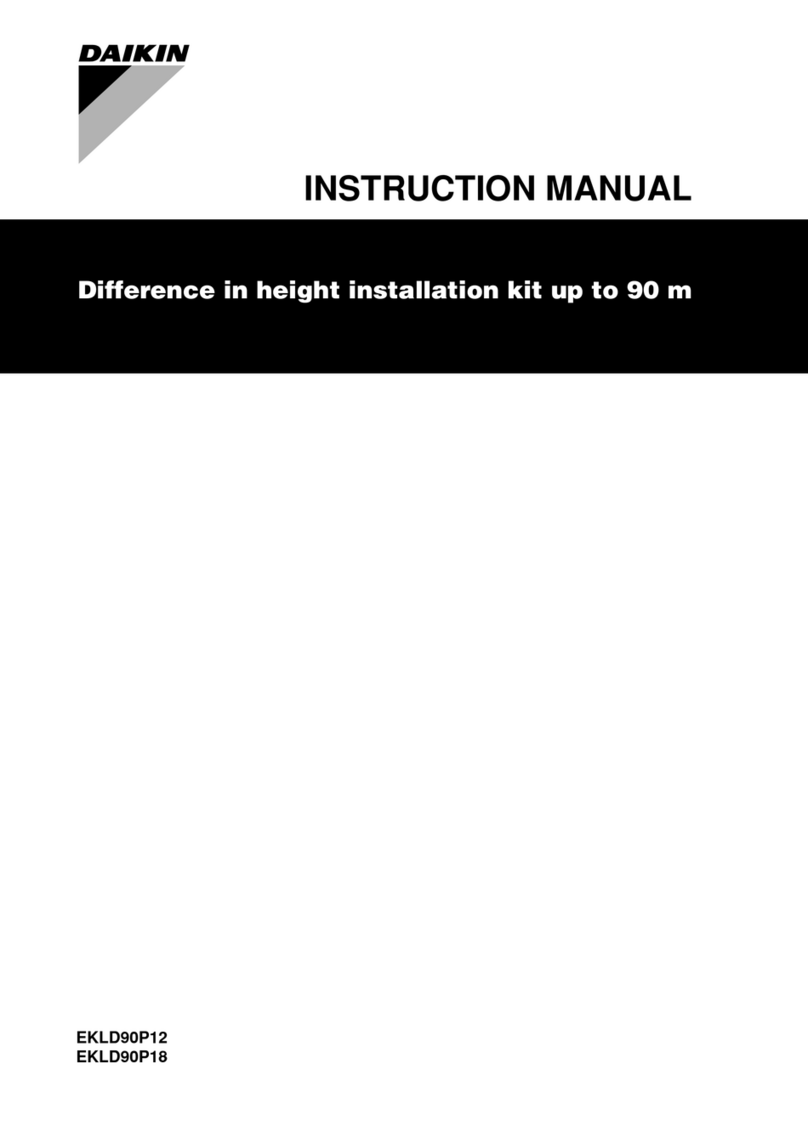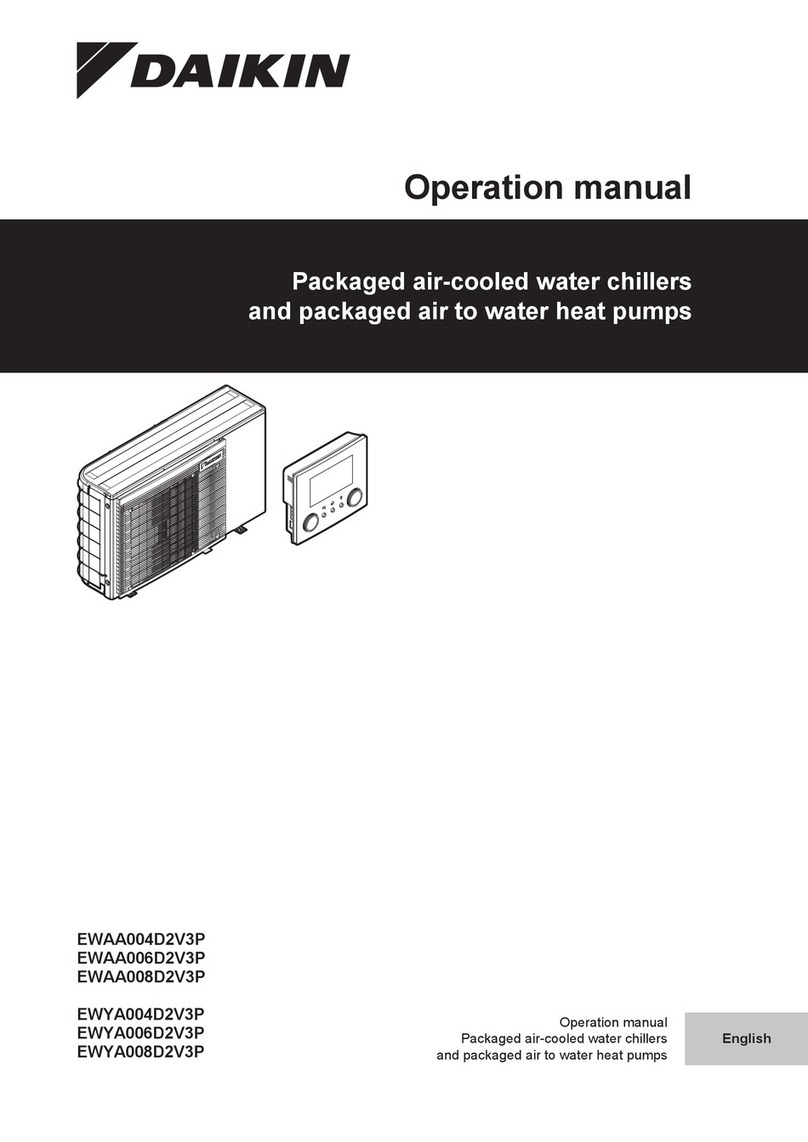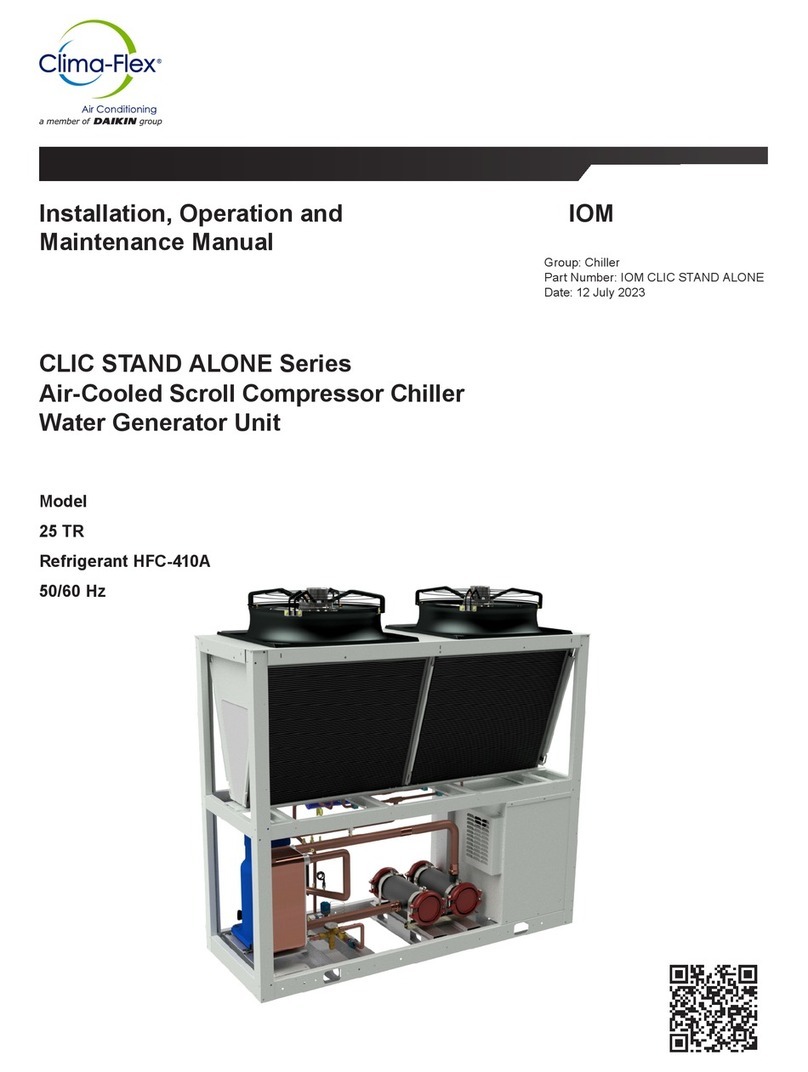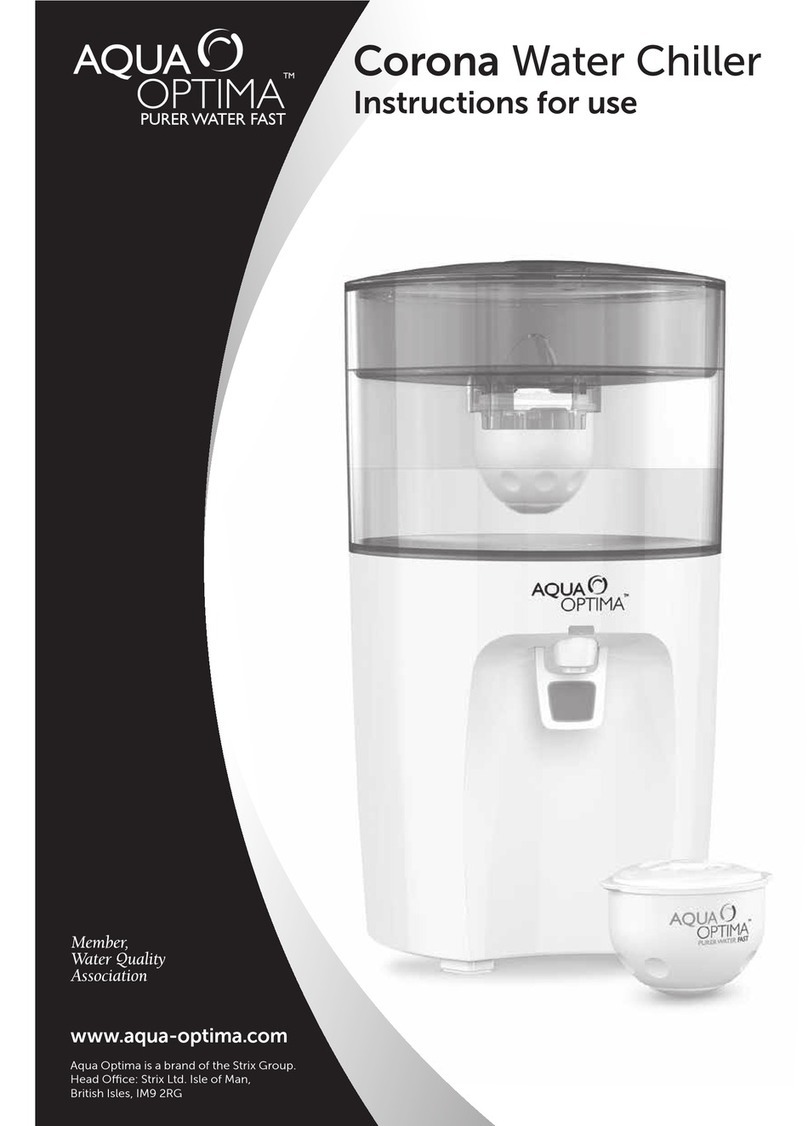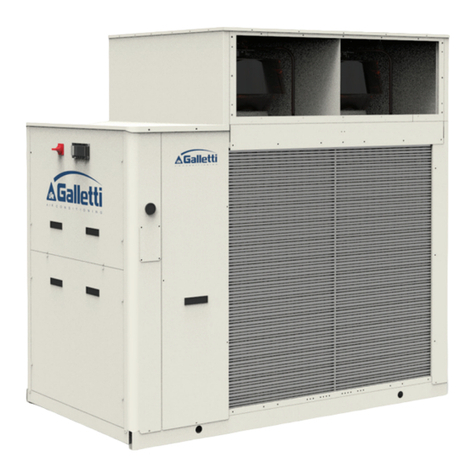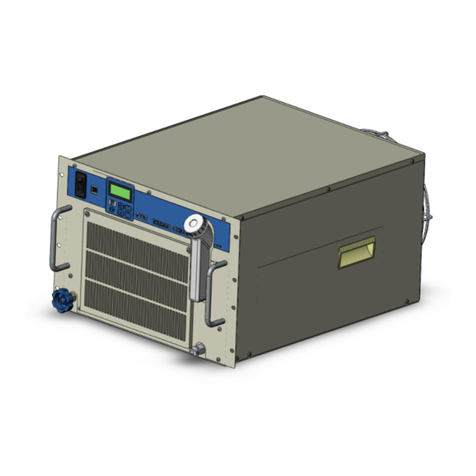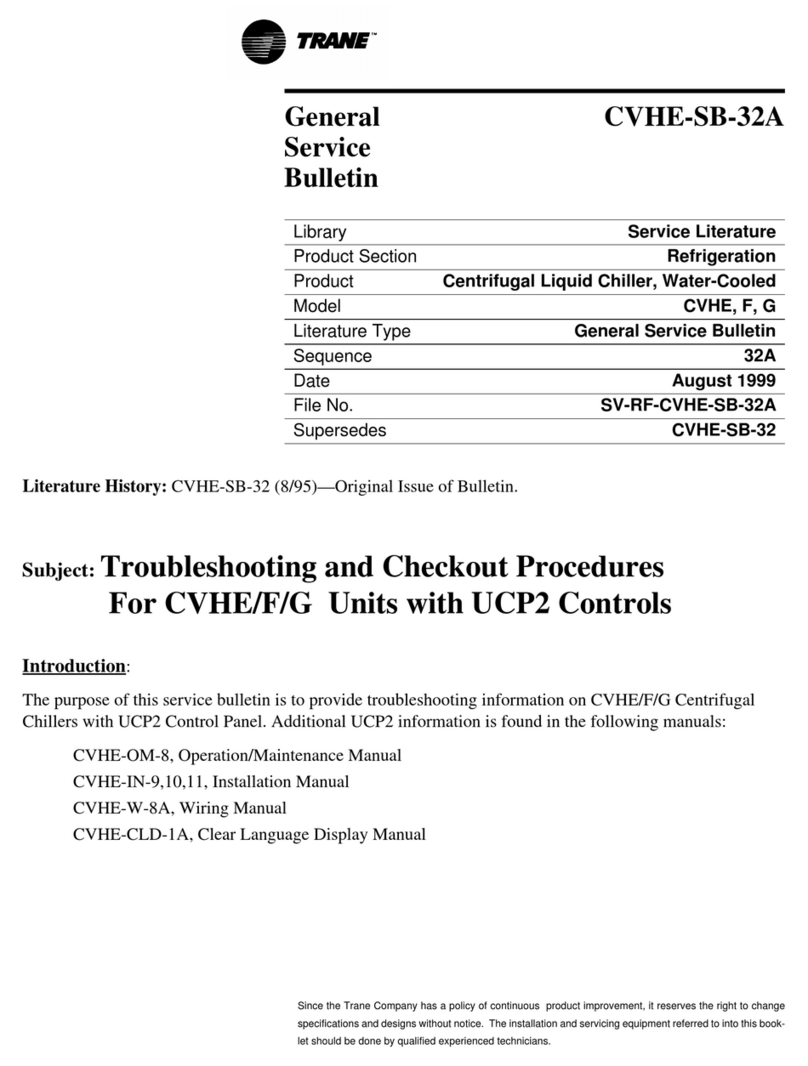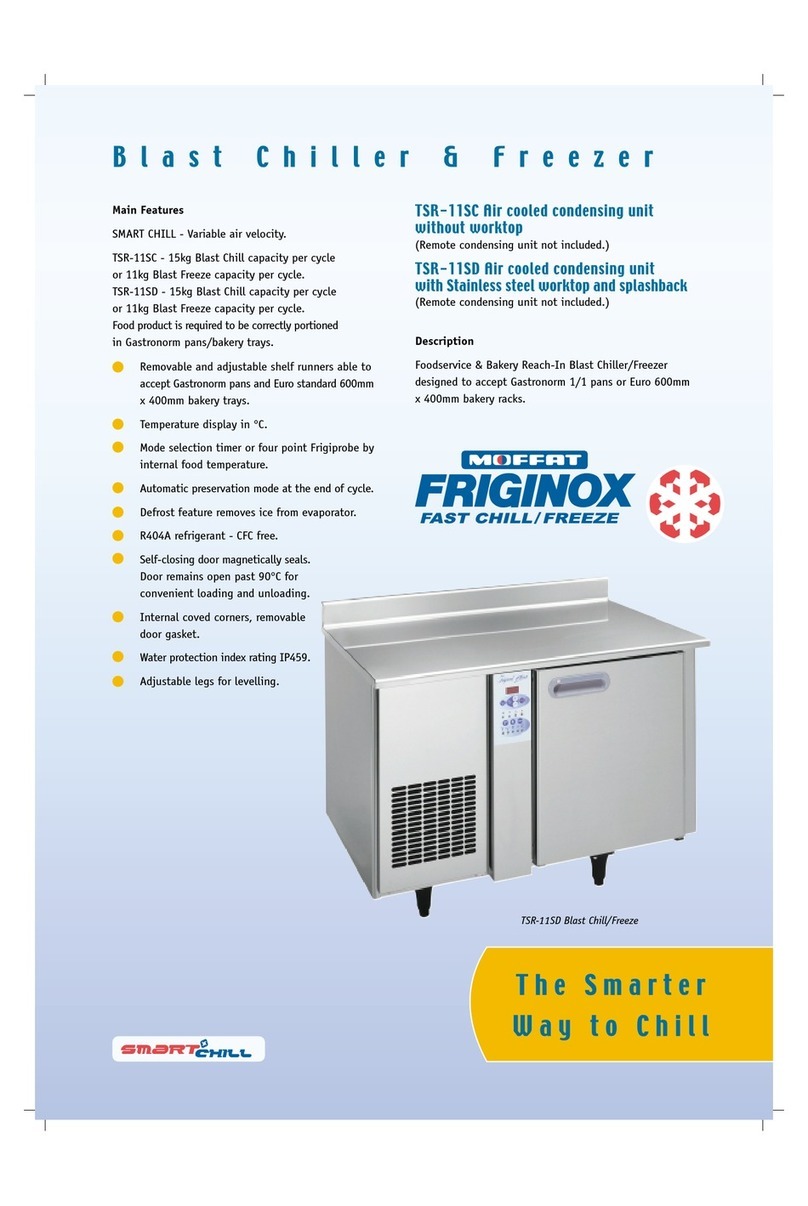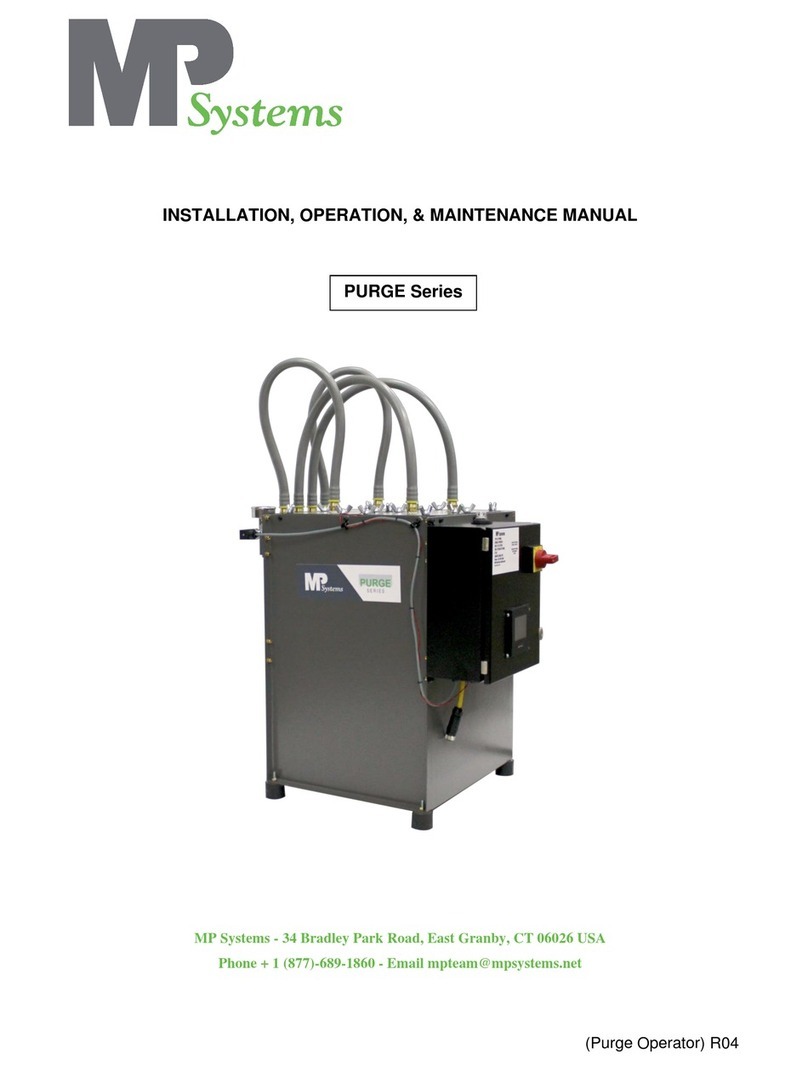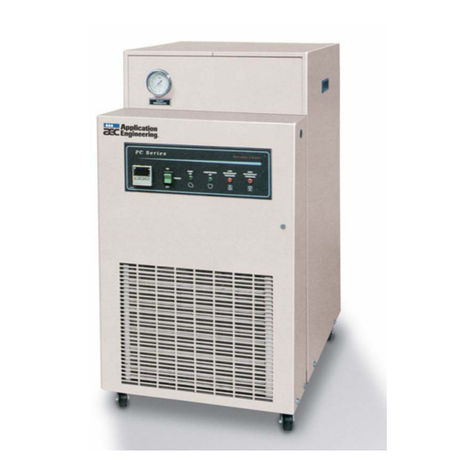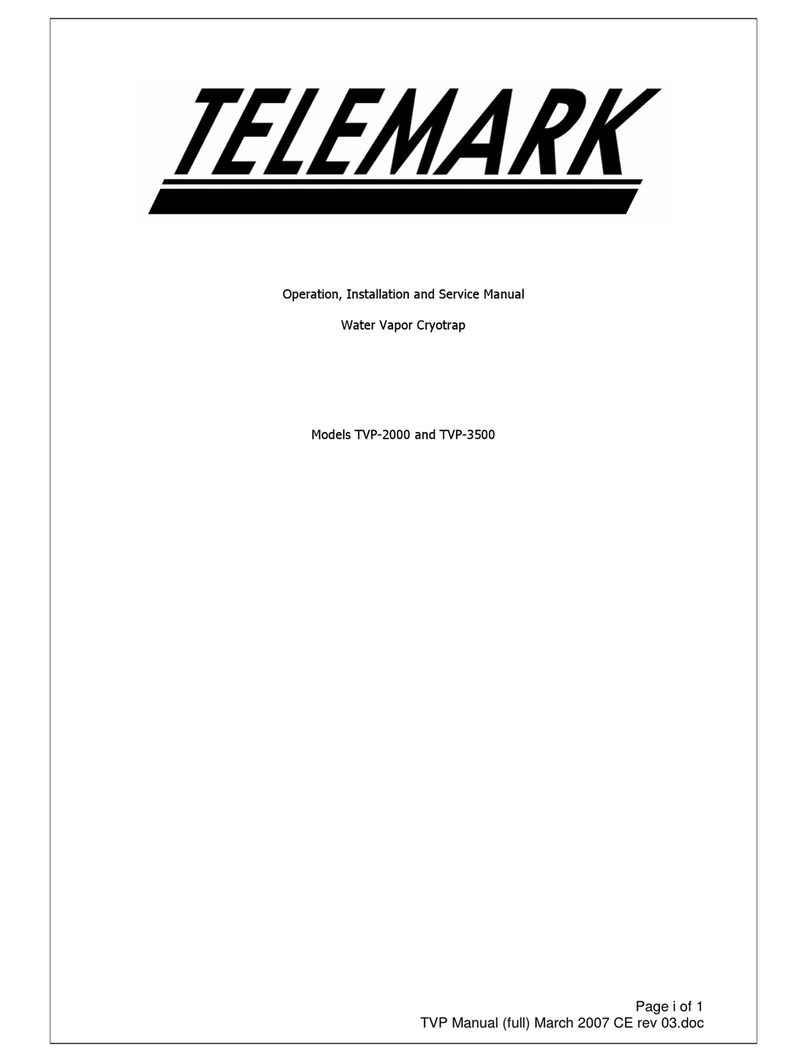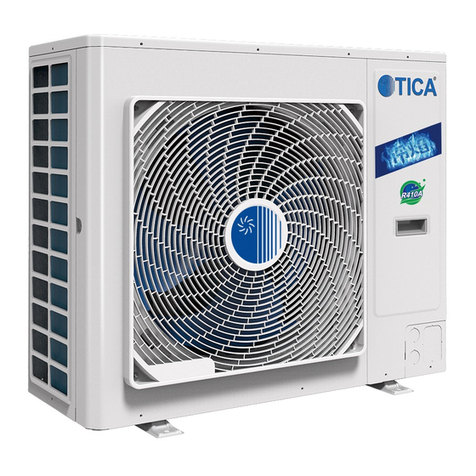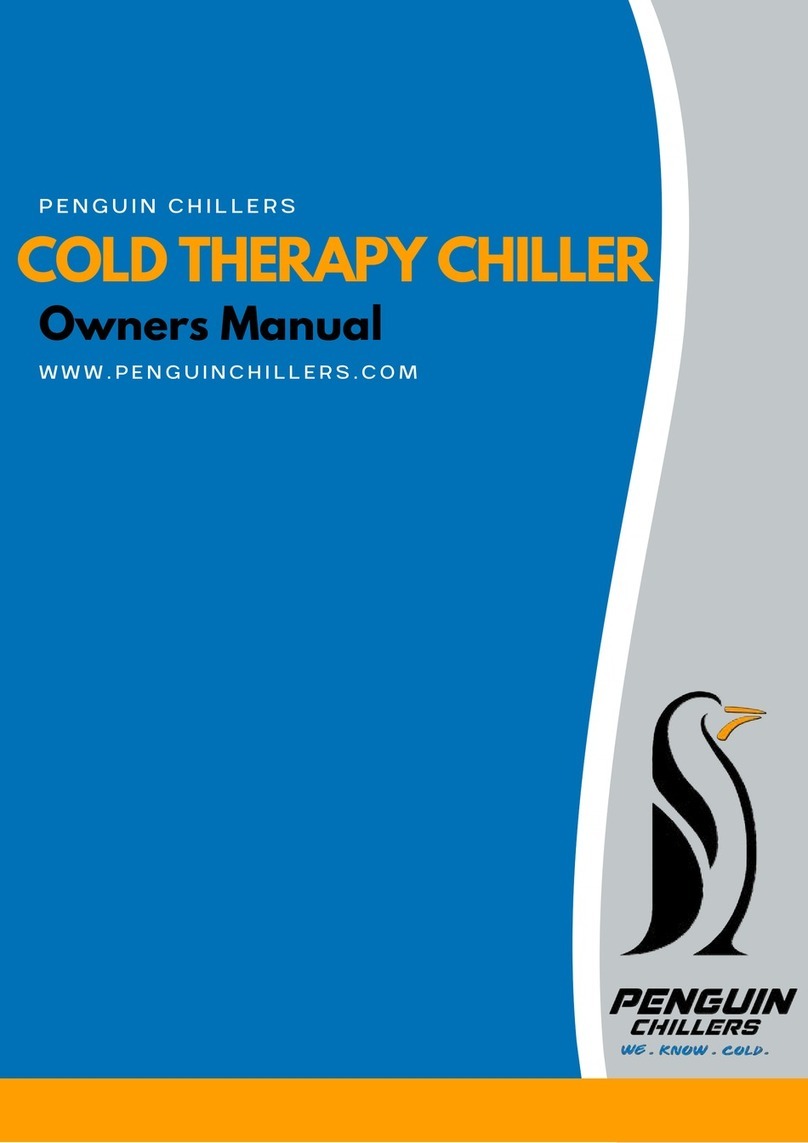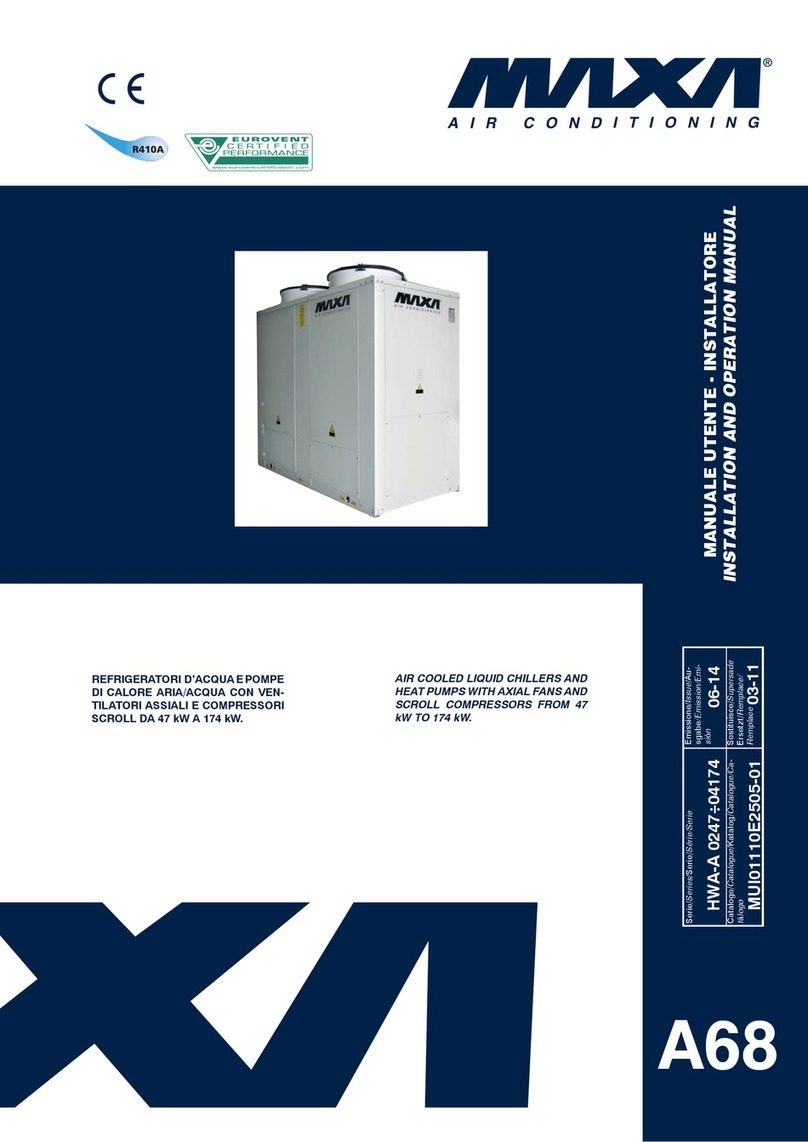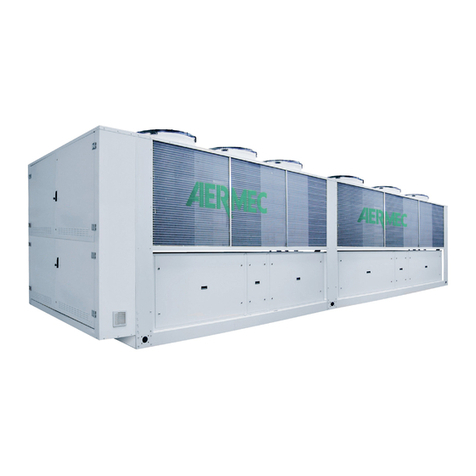D-EIMAC01207-15EN - 3/22
Thankyouforpurchasingthischiller
Thismanualisanimportantsupportdocumentforqualifiedpersonnelbutitisnotintendedtoreplacesuchpersonnel.
READ THIS MANUAL CAREFULLY BEFORE INSTALLING AND
STARTINGUPTHEUNIT.
IMPROPERINSTALLATIONCOULDRESULTINELECTRICSHOCK,
SHORT-CIRCUIT,COOLANTLEAKS,FIREOROTHERDAMAGETO
EQUIPMENTORINJURY.
THE UNIT MUST BE INSTALLED BY A PROFESSIONAL
OPERATOR/TECHNICIAN.
UNIT STARTUP MUST BE PERFORMED BY AUTHORISED,
TRAINEDPERSONNEL.
ALLACTIVITIESMUST BECARRIEDOUTINACCORDANCEWITH
LOCALLAWSANDREGULATIONS.
IFTHEINSTRUCTIONSINTHISMANUALARENOTABSOLUTELY
CLEAR,DONOTINSTALLAND/ORORSTARTUPTHEUNIT.
IFCASEOFDOUBTCONTACTTHEMANUFACTURER'S
REPRESENTATIVEFORADVICEANDINFORMATION.
Description
The unit purchased is a Water Chiller that is designed
to cool water (or a water-glycol mixture) within certain
limits which will be listed below. The unit operates
based on the compression, condensation and
evaporation of vapour as per the Carnot cycle and
consists mainly of the following components:
- One or more scroll compressors which increase the
pressure of the refrigerant gas from evaporation
pressure to condensation pressure.
- A condenser where the refrigerant gas condenses
under high pressure and transfers heat to the
water.
- An expansion valve which allows the pressure of
condensed liquid refrigerant to be reduced from
condensation pressure to evaporation pressure.
- An evaporator, where the low pressure liquid
refrigerant evaporates and chills the water.
General Information
All the units are delivered with wiring diagrams,
certified drawings, ID plate and DoC (Declaration of
Conformity). These documents list all the technical
data of the unit acquired and CONSTITUTE AN
INTEGRALANDESSENTIALPARTOFTHISMANUAL.
In the event of any discrepancy between this manual
and the appliance documents, please refer to the
documents that come supplied with the unit. In case of
doubt, contact the manufacturer's representative.
The aim of this manual is to make sure that the installer
and the qualified operator can properly commission,
operate and maintain the unit without creating any risk
to people, animals or things.
Receiving the unit
The unit must be inspected for any possible damage
immediately upon reaching final place of installation. All
components described in the delivery note must be
inspected and checked.
Should there be evidence of damage, do not remove
the damaged components and immediately report the
extent and type of damage both to the transportation
company, asking them to inspect it, and the
manufacturer's representative, sending if possible
photos which may be useful in identifying those
responsible.
Damage must not be repaired before the inspection of
the transportation company representative and the
manufacturer's representative.
Before installing the unit, check that the model and
power supply voltage shown on the nameplate are
correct. The manufacturer will not accept responsibility
for any damage following acceptance of the unit.
Storage
The unit must be protected from dust, rain, constant
exposure to the sun and possible corrosive agents and
rodents when being stored outside before installation.
Even though it is covered by a heat-shrinking plastic
sheet, this is not intended for long-term storage and
must be removed as soon as the unit is unloaded. The
unit must be protected by tarpaulins or suchlike which
are more suitable for the long term.
Storage conditions must be within the following limits:
Minimum ambient temperature: -20 °C
Maximum ambient temperature: +42 °C
Maximum relative humidity: 95% without condensation.
If the unit is stored at a temperature below the minimum
ambient temperature, the components may be
damaged, while at a temperature above the maximum
ambient temperature, the safety valves could open and
discharge the refrigerant into the atmosphere.
Operation
Operation outside any of the above-mentioned limits
may damage the unit.
In case of doubt, contact manufacturer's representative.
.
